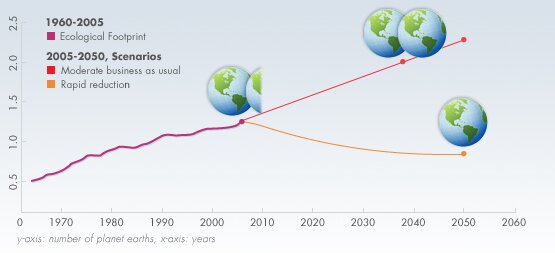Archive for the ‘Business & Economics’ Category
How sustainability changes the rules of branding
Does sustainability change the rules of branding? I believe it does and describe why and how in a guest column today for Sustainable Business Oregon. Here’s an excerpt:
In branding, the job of connecting emotionally is typically left to marketing and advertising. History suggests that works for many product categories where competitive differentiation is scant and great advertising is their only hope of making consumers care.
Once a company starts hanging its hat on sustainability, however, the rules change. Branding is no longer a game of emotions alone. It becomes a game of facts and emotions. That takes the practice of branding outside the narrow zone of marketing and advertising and into the broad realm of operations and employee engagement to ensure sustainability practices are, in fact, implemented.
My piece also includes the 10 steps to building a sustainable brand. Check it all out and let me know what you think!
Taking the road less traveled on consumption
This article first appeared in Sustainable Industries, September 28, 2010.
The latest drop in consumer confidence will no doubt discourage many businesses. After all, consumer spending comprises 70 percent of U.S. Gross Domestic Product.
If individuals have greater confidence in the future, they buy more stuff. Businesses make more money and hire more employees. That increases consumers’ ability to purchase more things, their confidence rises and the virtuous cycle continues.
Until it stops.
And stop it did two years ago this month after Lehman Brothers collapsed into bankruptcy and sent stock markets and the economy into a tailspin.
With today’s overall economy only modestly improved, we in business today find ourselves at a crossroads. Do we continue down the rutted but familiar road of a materialistic marketplace, hoping the road will soon smooth out? Or do we choose an alternate route to prosperity this time?
The dead end of material consumption
It didn’t take the Great Recession to teach many of us the path of consumption we’ve traveled for more than a century is ultimately a dead end. That’s been apparent for some time; we have only one planet to sustain our pace of natural resource consumption, and we need two or three at the rate we’re going.
What isn’t apparent is whether our experience of the Great Recession will fundamentally change the way we do business. Ask yourself:
- Is your business hunkering down, waiting for the return of the free-wheeling, free-spending consumer?
- Or are you using this period to rethink your business model, what you produce and sell and how you measure success—consistent with a resource- and financially constrained age?
Confronting ‘the materiality paradox’
The last time we suffered a downturn like this was the early 1980s. When we emerged from that recession, Americans went on an unprecedented spending and consumption binge that continued largely unabated until two years ago.
The era gave rise to what sociologist Juliet Schor describes in her excellent new book, “Plenitude,” as “the materiality paradox.” That is, as products became more valued as “symbolic communicators,” they grew more reliant on fashion and novelty, speeding the cycle of consumption.
“People buy more products and turn them over more quickly,” she writes. The paradox is we value goods less today, but we consume more of them to satisfy our natural desire for social meaning and individual expression.
The non-material consumer economy
If past behavior is the best predictor of future behavior, then it’s likely Americans will return to what we do better than anyone: consume. But nowhere is it written that what or how much we consume has to be identical to the last 25 to 30 years. A consumer economy doesn’t have to mean “a-consumer-of-materials economy.”
Much of what individuals and businesses “consume” is far more about experiences than stuff, such as:
- education and training, of all types
- fine arts, crafts
- music, theater, dance and other performing arts
- movies, reading, sports and other entertainment
- travel
- hiking, bicycling, skiing and other recreational activities
- digital gaming and other virtual products
That isn’t to say these and other experiences don’t have associated sustainability issues. The business challenge is to dematerialize the production, promotion and delivery of these experiences as much as possible. But businesses enjoy a head start on sustainability when their core products are experiences instead of goods.
Makers of goods can gain a similar advantage through “cradle-to-cradle” techniques such as upcycling (turning waste material or other used or useless products into new, higher-value goods).
Design for environment and sustainable design practices minimize raw material use and waste. But the jury is still out on whether better, smarter design is the “silver bullet” solution to over-consumption. At some point the prevailing materialistic mindset also has to change.
The road less traveled
The point is: A consumer economy isn’t unsustainable by definition. It depends on what and how much gets consumed. Americans are deeply conditioned to satisfy their desire for happiness and meaning by accumulating possessions. This reflects the persuasive power of professions like mine — branding and marketing — more than some genetic predisposition to shop.
Dislodging materialism as the economic status quo won’t be easy. But if enough businesses choose the road less traveled, the next three decades will look far different from the last three.
Many sustainability leaders in business are already re-conditioning customers to consume less and differently. They respect the material limits of our planet. And they recognize what customers ultimately desire — happiness, security, belonging — isn’t found on store shelves and never goes out of fashion.
Like sustainability, branding needs image change
A new study indicating the recession has crowded out concern for the environment prompted the New York Times to ask: “Is ‘thinking green’ an economic luxury?”
Uh, yeah. Not that it should be. If ever there was an economic necessity it would be to think green and adopt sustainable practices. But that’s just me speaking. My professional niche is sustainable branding, so I see business through the lens of sustainability. Plenty of recent studies show the continued gap between intention and action on sustainability among individuals and businesses.  Neither thinking nor acting green is considered essential.
Neither thinking nor acting green is considered essential.
Like sustainability, branding is viewed as a luxury by most in business. Ironically, that’s farthest from the truth in lean times like these. When acquiring and keeping customers is hardest, a business can least afford to ignore what creates competitive distinction and customer relevance — namely, its brand.
Branding’s image problem
Branding suffers from an enduring image problem. Mention branding, and dollar signs come to the minds of most executives. In a recession, that’s a show-stopper. The problem is branding is equated with design, advertising, marketing communications — all of which cost money. But brand promotion is only part of the branding equation — the most expensive part.
Yes, at some point, you have to build brand awareness, preference and loyalty. And that requires a financial investment in marketing. But the most essential components of building your brand — defining what it is and baking it into your culture, operations and products — are really just best management practices.
Branding is little different from other standard best practices, such as developing financial budgets, employment policies or product development plans. Sure they take some time and money to produce, but that’s simply the requirement of being in business, no matter the economic climate. So it is with branding.
When businesses declare branding a luxury they can’t afford, they are unwittingly saying, “We aren’t going to take the time to decide who we are as a business, what we stand for, what makes us distinct and why we matter as a company. And we’re not going to worry about whether we as managers and employees are keeping our promise as a business to customers and all our other stakeholders.”
Consequences of brand neglect
I used the word “unwittingly” because I don’t believe most business executives understand the consequences of neglecting their corporate brand until more prosperous times return.
 It’s one thing to slash advertising budgets or postpone the redesign of the firm’s visual identity. It’s quite another to lose sight of what makes your business distinct and relevant now, today, in an economy fundamentally different from just two years ago. Or to postpone accountability for whether your business is consistently delivering the customer experience you promise.
It’s one thing to slash advertising budgets or postpone the redesign of the firm’s visual identity. It’s quite another to lose sight of what makes your business distinct and relevant now, today, in an economy fundamentally different from just two years ago. Or to postpone accountability for whether your business is consistently delivering the customer experience you promise.
From the inside looking out, your brand is your over-arching promise to stakeholders. From the outside looking in, your brand is the image stakeholders have of your business, based on direct experience or word-of-mouth. Any business with customers or employees has a brand image. The question is whether the business understands and cultivates that image or leaves the task to others, such as competitors who are only too willing to tell your story for you.
At its most basic, branding means ensuring the experience aligns with the promise. That’s not accomplished by simply spending more money on clever advertising or glitzy marketing events. Much more important is being clear about what your promise is as a company and how your employees, products and practices deliver on it day after day, regardless of the economy.
Branding as necessity
Seen from this perspective, branding is no luxury. And it doesn’t have to be about spending big bucks. What it does require is time and commitment from senior leadership to ensure the brand:
- firmly establishes competitive distinction and customer relevance
- is understood and fulfilled across the company
- is positively perceived by customers, employees and other key stakeholders
Branding is an all-company, everyday exercise in earning and keeping customers and creating competitive advantage. When times are toughest, attention to your brand becomes more crucial than ever.
Does branding need to be on your list of business necessities? If so, I invite you to get in touch and explore how to make that happen.
Does happiness have anything to do with business?
Described elsewhere as the “happiest man in the world,” Tibetan Buddhist master Yongey Mingyur Rinpoche reminds his audience what we inherently know and usually forget: Happiness lies within.
I heard Yongey Mingyur speak at a recent Portland State University event on “sustainable happiness.” As a sustainability advocate and a sometimes meditator, I couldn’t resist attending.
We in the US might want to listen to what Yongey Mingyur has to say. Despite being a country that enshrined the pursuit of happiness in its Declaration of Independence, the US ranks down most lists of the happiest countries. Probably not surprising given how we’ve managed to conflate happiness with having or buying more things.
A 2,500-year-old practice mastered by the likes of Yongey Mingyur suggests the cultivation of mindfulness as an alternative path to happiness. And what happens to be on my mind as I blog today is this: Does happiness have anything to do with business?
Fair question, it seems, given the ongoing economic upheaval. These are hard times in many workplaces. Employees who withstood layoffs now asked to do more. Wage rollbacks or miniscule raises. Desperate competitors slashing prices and everyone’s profit margins. And now, worry about a double-dip recession. What’s there to be happy about — other than still being in business or having a job?
In my experience as a business owner, consultant and employee, happiness eludes most businesses even in the best of times. Best, in this case, means periods of rapid revenue and profit growth. It’s the rare company in the midst of a boom cycle that declares, “Enough. We’re happy with what have.” Most cling to the notion that if your business isn’t growing, it’s dying.
Survival of the paranoid
In good times and bad, business is a practice in survival. And as Andy Grove, founder of one of the world’s most successful companies, Intel, famously asserts, “Only the paranoid survive.” He may have a point. Intel CEO Paul Otellini last month declared Q2 2010 “the best quarter in the company’s 42-year history.” And that’s in the midst of the Great Recession!
So should we be nurturing “Intel Inside” all of our businesses, rather than happiness? If we did, we might find the company voice within sounding something like Andy Grove when he writes:
Business success contains the seeds of its own destruction. The more successful you are, the more people want a chunk of your business and then another chunk and then another until there is nothing left. I believe that the prime responsibility of a manager is to guard constantly against other people’s attacks and to inculcate this guardian attitude in the people under his or her management.
Not exactly a happy-sounding voice. But maybe happiness is something we pursue only in our off hours. And maybe Nirvana’s Kurt Cobain was speaking for business when he sang: “Just because you’re paranoid don’t mean they’re not after you.”
FUD instead of happiness?
Or maybe we should be listening to Yongey Mingyur whose tradition maintains: “The basic concern shared by all beings—humans, animals, and insects alike—is the desire to be happy and to avoid suffering.”
We don’t avoid suffering by inviting fear and paranoia to rule our lives. Why would it be any different in business?
Truth is, we’re not very practiced at cultivating happiness, at work or outside of work. In fact, we’re much more skilled at sowing fear, uncertainty and doubt. In business parlance, it’s simply called FUD. Surround your competitors with FUD so your customers are more apt to choose you. Contrary to human nature, business doesn’t avoid FUD; it rewards it!
So back to my question: Does happiness have anything to do with business? Sure. We all want delighted customers. Even Andy Grove. And yet how many of us believe the purpose of business is to help others—customers, employees, partners, neighbors—be happy? I’m guessing, not many. In other words, happiness doesn’t have that much to do with business.
What if…
What if business was all about happiness? What if we were to follow the lead of the happy country of Bhutan, as hotelier and author Chip Conley recommended in his recent TED talk, and create “a habitat for happiness” in our businesses?
For starters, we might catch up with our customers, more of whom are realizing the futile chase for happiness through more stuff. As the New York Times reported this month, more Americans are responding to today’s economic realities by simplifying their lives, spending more on experiences than possessions and generally getting in touch with what really matters, like relationships with family and friends.
So what do you think? Does business have any business cultivating happiness? Or is it true, only the paranoid survive?





